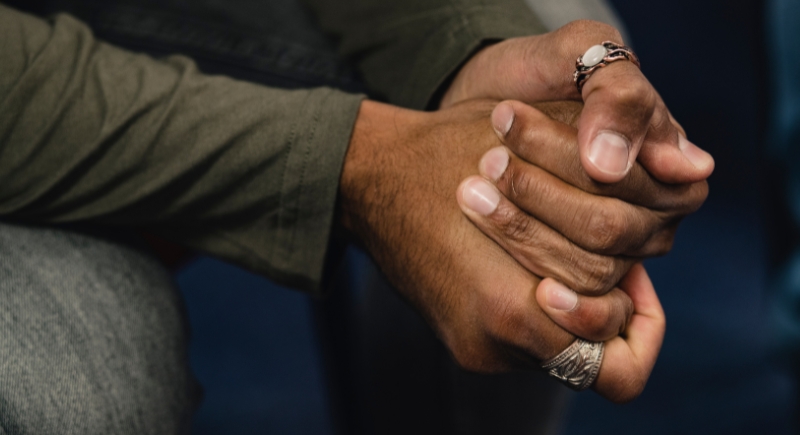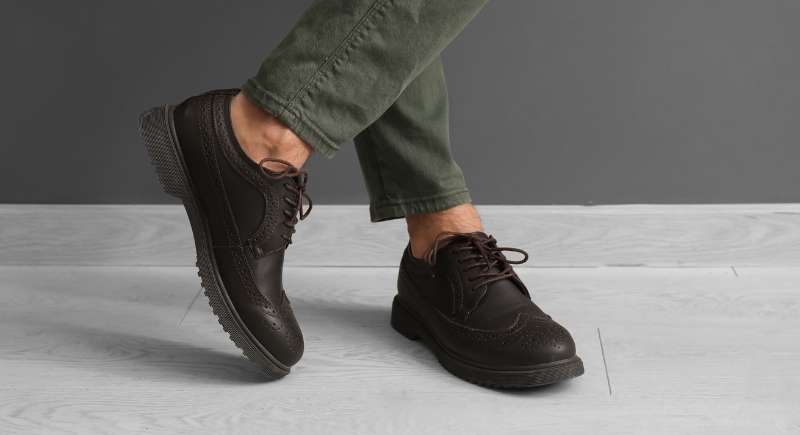10 Body Language Tips Every Man Over 50 Should Know
By the time you hit 50, you’ve racked up a lot of life experience. You’ve been around the block, and you’ve got stories to prove it. But when it comes to your body language, maybe it still needs some work since it might not always be telling the same confident story. The way you move, stand, and gesture can either reinforce your presence or quietly undercut it.
Luckily, small tweaks can make a big difference. Let’s break it down.
Lead Hand-First With Intention, Not Submission

Credit: Canva
When you go in for a handshake, don’t just think of grip strength; think of angle. A palm-up approach gives off “deferential vibes,” while a palm-down tilt says, “I’ve got this.” Keep your index finger straight to widen the handshake’s surface and create the feel of a stronger grip, without over-squeezing.
Master the Eyebrow Flash

Credit: Getty Images
A barely visible eyebrow raise, lasting less than half a second, signals recognition and rapport. A quick raise (we’re talking blink-and-you’ll-miss-it speed) can say “Hey, I see you” in a way that feels authentic. Use it at the start of a convo or when someone makes a good point. Just don’t turn it into a tic.
Smile With Your Eyes, Not Just Your Mouth

Credit: iStockphotos
The Duchenne smile, identified by slight crinkling around the eyes, reads as genuine. People are biologically tuned to trust this type of smile more. Practice engaging your cheek muscles and raising your cheeks when smiling to create this effect naturally.
Keep Your Gaze Level When Walking

Credit: iStockphotos
Your stride says a lot. Quick, choppy steps can make you look anxious or rushed. Instead, aim for a smooth, steady pace. Let your arms swing naturally and keep your gaze up. The result is subtle but noticeable: you look present, self-assured, and at ease.
Never Bury Your Thumbs

Credit: Africa images
When standing or speaking, visible thumbs convey openness and ease. Hiding them—whether in pockets or behind crossed fingers signals unease or concealment. Instead, rest them casually outside your pockets or gesture while you talk. It gives off an easygoing, open vibe without trying too hard.
Favor Your Left Side (Yes, Really)

Credit: iStockphoto
This one’s a fun science quirk: your left side is often more expressive, thanks to how your brain controls facial muscles. When chatting, angle just slightly to show that side. It draws people in and signals interest without saying a word. Interestingly, it can make you seem more emotionally tuned in.
Claim Your Space With Balanced Stance

Credit: iStockphotos
You don’t need to puff up like a superhero, but don’t collapse in on yourself either. Avoid closing in on yourself or shrinking your posture. This doesn’t mean being overly expansive—it means not apologizing for your presence.
Sit Beside, Not Across

Credit: iStockphotos
When on a date or just grabbing coffee, sitting directly across from someone can feel like a negotiation. Try sitting at an angle or beside them instead. It lowers the pressure, makes the whole thing feel more relaxed, and turns conversation into connection.
Use Pauses to Your Advantage

Credit: iStockphotos
Speaking quickly can make you sound nervous, or like you’re trying to get it over with. Pausing briefly while speaking helps you appear thoughtful and in control. It shows you’re thinking, gives your words time to land, and lets your confidence do the talking.
Watch Where Your Hands Rest

Credit: Getty Images
We all talk with our hands—some more than others. The trick is to use them just enough to underline your words, not overshadow them. Open palms are perceived as welcoming. Tightly clasped hands or fingers twisting like you’re solving a Rubik’s cube signal discomfort. Let your hands rest naturally at your sides or gesture in sync with your points.
Read Feet to Gauge Intent

Credit: pixelshot
During any interaction, the direction of a person’s feet often reveals more than their words. Feet pointed toward you suggest engagement. Feet angling away may indicate a desire to leave or discomfort. Being able to spot this helps you understand where the conversation really stands.
Keep Your Chin Level, Not Tilted

Credit: iStockphotos
Your chin placement is like your internal confidence meter. Tilt it too high, and you risk looking smug. Drop it too low, and you might come off as unsure. Aim for a neutral position by leveling with the ground. It makes eye contact easier and helps you come across as calm, not cocky.
Match, Don’t Mimic

Credit: iStockphotos
Mirroring someone’s body language can create a connection—it’s an old social trick that works. But it’s got to be smooth. If they lean in, you lean in a little. If they cross their legs, you don’t need to follow suit like a mime immediately.
Use Shoulder Alignment Wisely

Credit: iStockphotos
Facing someone full-on can feel intense, especially in casual or vulnerable conversations. Angling your shoulders slightly, especially during casual chats, creates ease. This approach invites openness and makes it easier for others to feel comfortable continuing the conversation.
Avoid Touching Your Face Mid-Conversation

Credit: iStockphotos
Resting your hand on your chin or scratching your nose mid-sentence distracts from what you’re saying and can subconsciously signal nervousness or dishonesty. Keep your hands below your shoulders unless you’re gesturing naturally. The more open and still your face remains, the more trustworthy you appear.